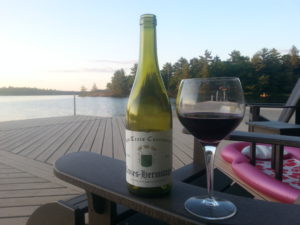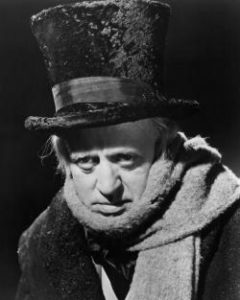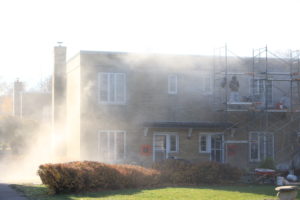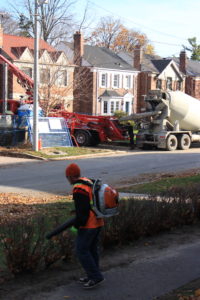January 28: I have never understood people who say that beer is an acquired taste. I remember my very first beer – which was, in fact, my very first alcoholic drink – and I loved it. I had gone to La Rotonde, a bar in Lausanne, with fellow student and room-mate Paul Dubois. It was a warm and sunny September afternoon and the beer was a Swiss brand called Cardinal. In a year of big changes in my life, having the ability to drink was foundational, and that first drink started a life-long relationship with alcohol.
 While I certainly enjoyed the taste of beer, I was seduced by the way that alcohol changed me. I became more self-assured and out-going. I was less fearful of appearing to be “less than” and more willing to take chances. I was more sociable and able to interact with people – especially women – much more easily. I broke out of my shell a bit during that year in Lausanne and a lot of the credit goes to alcohol.
While I certainly enjoyed the taste of beer, I was seduced by the way that alcohol changed me. I became more self-assured and out-going. I was less fearful of appearing to be “less than” and more willing to take chances. I was more sociable and able to interact with people – especially women – much more easily. I broke out of my shell a bit during that year in Lausanne and a lot of the credit goes to alcohol.
Several years later I was gainfully employed and began passing time with one of my work mates at Joe Bird’s, a bar on Yonge Street. I was young and single and had enough money to enjoy some nightlife. Roger was my mentor and we spent many nights hoisting beer, trading stories and killing brain cells. It was a gathering spot for many people from our workplace and we were ring-leaders of a sort. Alcohol facilitated many adventures and encounters that would have otherwise been unlikely or perhaps impossible. Alcohol made it easier to socialize, to be outgoing and funny. Sadly, it also made it easier to engage in self-centred and hurtful relationships with women, some of whom may have been genuinely fond of me. While I now think I understand why I was behaving in that way, I still deeply regret the effects my behaviours undoubtedly had on others during that time.
My marriage to Melinda was in many ways fueled by alcohol. We met in Joe Bird’s over beers. Our entertainment was to enjoy a good meal and have a bottle (or two) of wine and some liqueurs. During the last few years we were together, I enabled her drinking partly because I wanted to have company when I was drinking. My behaviour was often structured around my relationship to alcohol rather than a more constructive and mature approach focussed on saving our marriage. She deserved better.
Recently, I have been drinking most days. I do enjoy a glass of wine, but there is always the temptation to extend that into another glass, and another glass…. I often drink because I am lonely, or I drink because I am bored, or I drink because I am unhappy. None of these is a good reason to drink, and with that in mind, I decided to have a sober January. While I did not notice a significant change in my health, I did feel “sharper” and more able to focus on things that were important to me. I became very aware of the amount of time and money I spend drinking.
When I had the first drink after about 3 weeks of abstinence, I immediately noticed the effects of alcohol: my balance was slightly off; my attitude, which was at first more relaxed and happier became sadder and more introspective. Old habits returned. I began day-dreaming and making grandiose plans for the future. It was all very familiar and very comfortable because I have become so used to having alcohol in my life.
Alcohol is literally a poison. It is carcinogenic and highly addictive. It damages our liver, our brain and nervous system, our pancreas. Yet we welcome it into our lives. We use it to socialize and enjoy it as part of our daily life. I am coming to believe that I need to treat alcohol with much more respect, not because I feel that I am at risk of becoming an alcoholic, but because I would rather not have my perceptions and abilities constantly altered by its effects. Like any relationship, this one needs to be re-evaluated. I need to be sure that my use of alcohol is consistent with the other things I want to do in my life: to be present, to be creative and to be healthy.






